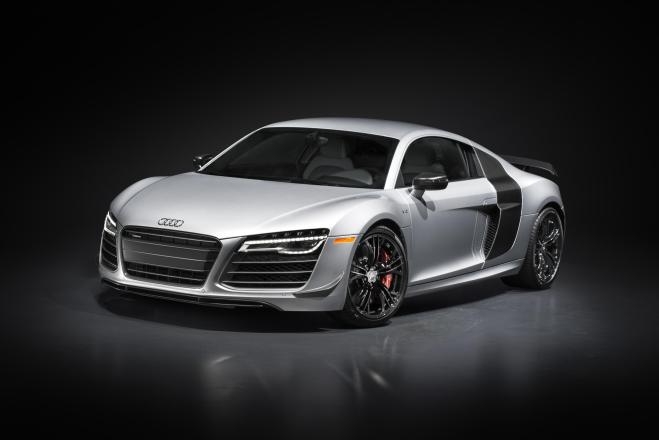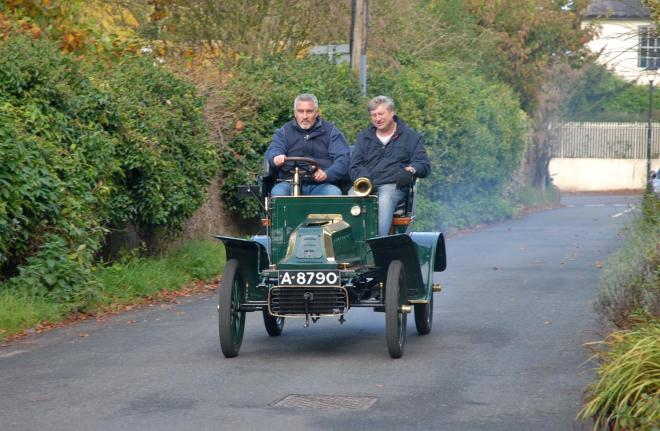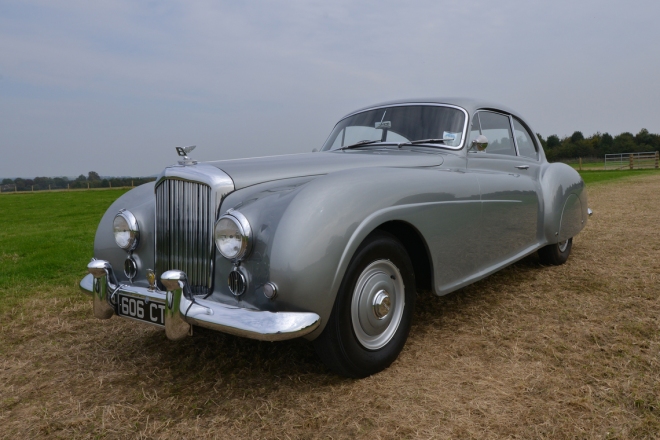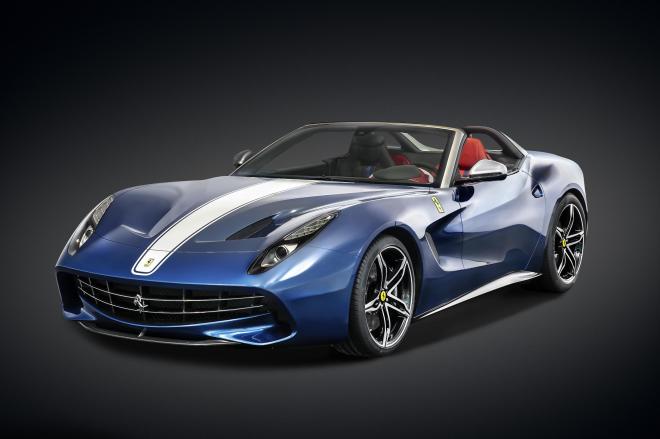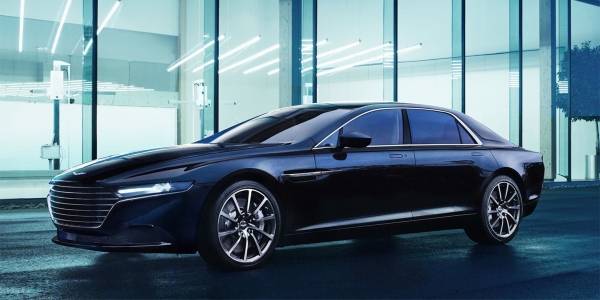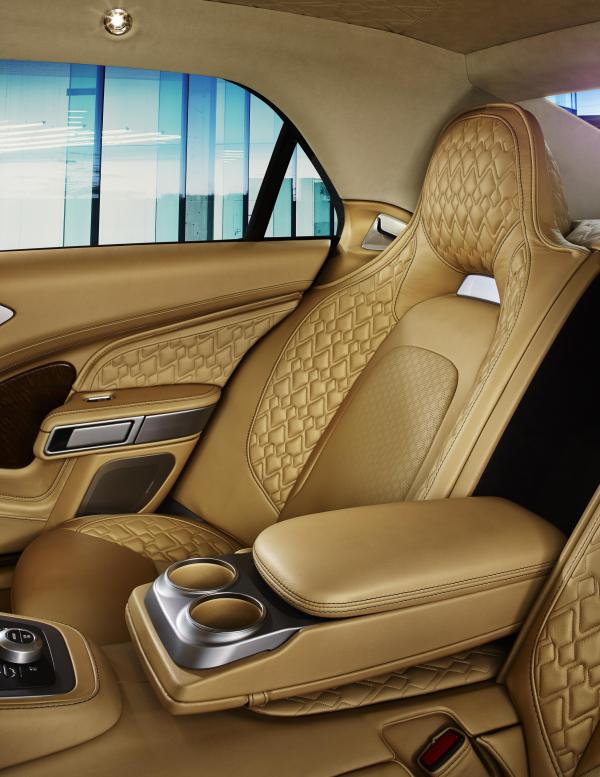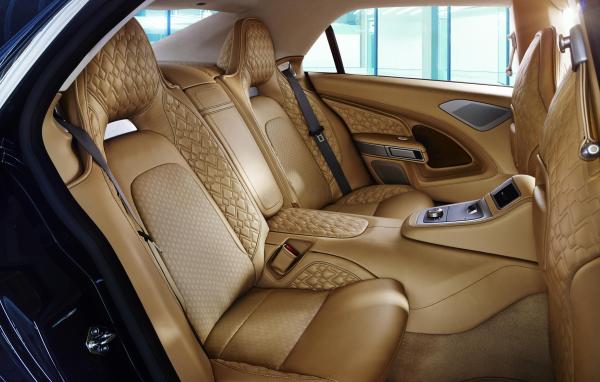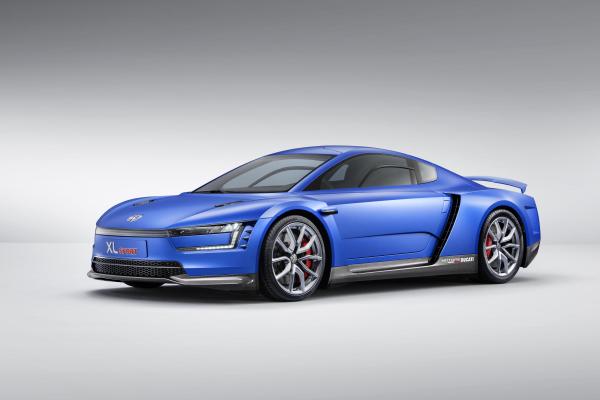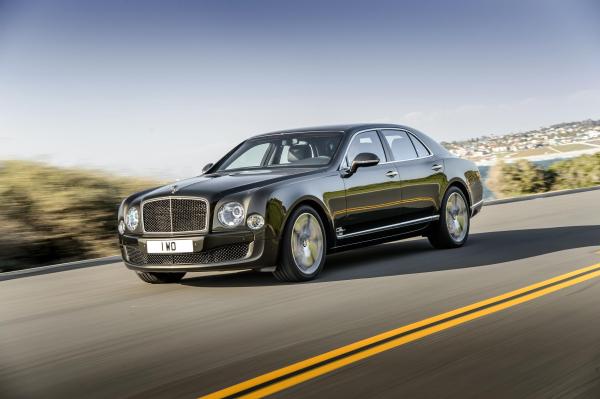
(Crewe, 16th September 2014) Bentley redefines the fastest ultra-luxury driving experience in the world with a new pinnacle flagship. The new Mulsanne Speed is tailored for the driver, with 537 PS (530 bhp / 395 kW), 1,100 Nm (811 lb.ft) and selectable sports suspension and steering on demand.
The reengineered powertrain, featuring Bentley’s mighty 6¾-litre twin-turbo V8, propels the Mulsanne Speed to 60 mph in 4.8 seconds (0‑100 km/h in 4.9 seconds) and on to a top speed of 190 mph (305 km/h). In modern Bentley tradition, the extra performance is matched by markedly improved efficiency; a 13% gain means a range extended by 50 miles (80 km).
New and contemporary styling features define the Mulsanne Speed as a statement in quintessential British luxury. On-board technology and connectivity are discreetly integrated beneath the finest materials, created with unrivalled craftsmanship and exquisite handcrafted details.
Chairman and Chief Executive of Bentley Motors, Wolfgang Dürheimer, comments:
“The new Mulsanne Speed is the car that defines Bentley, as a flagship for driving luxury performance. Our customers don’t compromise, and we’ve adopted the same approach in the design, engineering and crafting of our new flagship. The Mulsanne Speed is distinguished, calm and relaxing, but always with a connection to the road and relentless dynamic performance on demand. In this car, every journey becomes a drive.”
The Mulsanne Speed will be unveiled at the Paris Motor Show on Thursday 2nd October, and will be available for customer delivery this winter.
Torque pushed to record levels
At the heart of the Mulsanne Speed is Bentley’s iconic 6¾-litre twin-turbo V8 engine, which has been re-engineered for the Mulsanne Speed as well as the signature Mulsanne. A totally redesigned combustion system (including combustion chamber, inlet ports, fuel injectors, spark plugs, and compression ratio) promotes a much faster and more controlled combustion process. Through combining these advances with new variable valve timing and optimised turbocharger control, torque output of the engine has been pushed to record levels – 1,100 Nm (811 lb.ft) from 1,750 rpm.
The swell of torque from low engine speeds builds to a new peak power output of 537 PS, enough to drive the Mulsanne Speed to a top speed of 190 mph (305 km/h) – an unrivalled figure in the ultra-luxury sector. The 0‑60 mph sprint is covered in 4.8 seconds, with 0‑100 km/h taking just 4.9 seconds.
The new engine is paired with a recalibrated gearbox designed to enhance the driving experience of the Mulsanne Speed. The gear strategy is optimised for the new, higher wave of torque, and is designed for instant torque delivery on throttle application. The connection between the car and driver has been the focus, and extensive validation with both keen drivers and professional chauffeurs has proven the new setup. A new “S” mode gives the driver even more control, and maintains the engine speed above 2,000 rpm so that the turbochargers are always ready to deliver instantaneous performance.
An extensive recalibration of the engine management system has yielded benefits beyond increased torque and power. The cylinder deactivation system, that runs the engine as a V4 during light load, has been retuned for smoother transitions between V8 and V4 for even greater refinement. This work combines with a new gearbox control strategy and the engine hardware improvements to give a new level of efficiency for the Mulsanne engine.
Meeting the new EU6 emissions legislation, and designed to also meet the upcoming US LEV III standards in the future, the new powertrain records 342 g/km of CO2 on the NEDC drive cycle – a 13% improvement on the current Mulsanne. The ensuing fuel economy improvements have extended the fuel range of the new Mulsanne Speed by 50 miles (80 km).
A Chassis System Tailored to the Driver
To deploy the effortless power and acceleration on offer in the Mulsanne Speed, an even more driver-focused Sport suspension mode is included. While the Bentley and Comfort suspension modes provide a comfort-focused and fully compliant chassis setup, the Sport mode stiffens the all-round air suspension for improved body control and adjusts the steering dynamics for greater feedback and accuracy. The driver can also choose to individually match steering, chassis and engine tunes according to personal preference through the Custom setting.
Through this new setup, the Mulsanne Speed builds on the abilities of the signature Mulsanne model, being able to switch from a communicative and enjoyable car to drive at pace, to a relaxing, comfortable and exceptionally refined limousine.
An assertive exterior
The Mulsanne Speed reflects its ground-breaking performance with new and more assertive styling features that are marks of distinction for Bentley’s pinnacle flagship.
A dark tint finish is applied to the exterior stainless steel matrix grilles, in a process unique in the automotive industry, with the radiator grille, lower bumper grilles and wing vents all featuring this exquisite treatment. The distinctive headlights of the Mulsanne show the same dark tint application, and at the rear of the car the taillights retain the “floating ellipse” design, but are similarly finished with a dark tint for a striking appearance, especially at night.
The Mulsanne Speed introduces Bentley’s first ever directional style wheel, with a design that is handed for the right or left side of the car. The 21″ wheels, available in painted, polished and dark tint with machined accent finishes, are individually machined from solid forged blanks, before being perfected by hand.
Twin rifled exhaust tailpipes are the finishing touch to the revised powertrain, while solid, polished stainless steel Speed badging adorns the front fender and door tread plate areas.
Four new exterior paint colours are introduced for the Mulsanne and Mulsanne Speed. These are:
- Spectre: Seemingly black at first glance, heavy gold metallic and a hint of green result in a rich tone inspired by reptilian skin.
- Candy Red: A rich and deep liquid red.
- Camel: Reminiscent of golden sands, Camel has a bright metallic highlight with a butterscotch mid-tone.
- Marlin: A rich blue with a hint of green, inspired by the shade of deep ocean waters and with a metallic shimmer.
The “standard” paint range covers 25 shades, including Marlin, while the optional extended range features over 100 colours. A fully bespoke paint-matching service is available on request.
A Cabin of Contemporary Luxury
The cabin of the Mulsanne Speed is a contemporary reinterpretation of the exquisite interior of the Bentley flagship. To create a modern two-tone feel, a new and unique colour split is available, with new stitch lines, that balances diamond quilted light-colour hide with darker, smooth hide. A new technical veneer option is available, with Piano Black veneer panels now including expertly handcrafted carbon fibre inlays. These new, contemporary panels have been especially developed for the Mulsanne Speed and match the rich, lustrous finish of the Piano Black veneer.
The Mulliner Driving Specification interior features are fitted as standard to the Mulsanne Speed, and includes:
- Diamond quilted hide door panels and seats
- Indented hide headlining
- Embroidered Bentley emblems to all seats
- A coined finish to interior door handles
- Knurling to the sports gear lever and “organ stop” ventilation controls
- Drilled alloy sports foot pedals
Customers choose from 24 different hide colours, in six different colour splits, and ten different veneers (seven as cost options) when specifying their Mulsanne Speed. Included in these ranges is a new hide colour, Camel (to match the new exterior paint of the same name) and a new veneer to the Mulsanne family, Tamo Ash.
Concealed Technology and Endless Customisation
Concealed beneath the exquisite materials that define the Mulsanne Speed cabin is a suite of technology to make any journey as productive or relaxing as one desires. A 60 GB on-board hard drive can store the driver’s collection of music and films. Electrically-operated tables, with recesses and connections for iPads and matching keyboards, can be fitted to the rear of the front seats, while on-board Wi-Fi through a dedicated router keeps the car connected to the outside world. A frosted glass bottle cooler, complete with bespoke crystal champagne flutes, may be installed behind the rear armrest. A 2,200 watt Naim for Bentley premium audio system expands on the standard 14-speaker system and offers the best in-car sound experience in the world. Entertainment on-the-move can be provided through the Rear Seat Entertainment system, including two 8” screens and Bluetooth headphones.
Signature Mulsanne updated for 2015
The signature Mulsanne ultra-luxury sedan has been updated for 2015, to complement the launch of the performance-focused Mulsanne Speed. The Mulsanne receives the same efficiency upgrade through new engine hardware, with its 512 PS (505 bhp), 1,020 Nm (752 lb.ft) 6¾-litre twin‑turbo V8 engine also now 13% more efficient. Changes have also been made to the gearbox calibration of the Mulsanne, focussing on smoother, relaxed gear changes that promote a comfortable and refined driving experience. New paint colours, hide and veneers options are also available across the Mulsanne family.
| Bentley Mulsanne Speed |
| Engine |
| Type | 6.75-litre twin-turbocharged V8 |
| Max Power | 537 PS / 530 bhp / 395 kW @ 4,200 rpm |
| Max Torque | 1,100 Nm / 811 lb.ft @ 1,750 rpm |
| Transmission |
| Type | ZF 8-speed automatic with Quickshift, Block Shifting and wheel-mounted paddleshift |
| Driveline | Rear wheel drive |
| Ratios | 1st: 4.71; 2nd: 3.14; 3rd: 2.10; 4th:1.67; 5th: 1.29;
6th: 1.00; 7th: 0.84; 8th: 0.67 |
| Final Drive | 2.92 |
| Brakes |
| Front | 400 mm ventilated iron |
| Rear | 370 mm ventilated iron |
| Wheels and Tyres |
| Wheels | 9J x 21″ |
| Tyres | 265/40 ZR21 |
| Steering |
| Type | Hydraulic rack and pinion with speed-dependant variable assistance |
| Turns lock-to-lock | 3.3 turns |
| Turning circle | 12.9 m / 42.3 feet |
| Suspension |
| Front | Double wishbone, anti-roll bar |
| Rear | Multilink rear suspension with toe and brake reaction control |
| Damping | Self-levelling air suspension with Continuous Damping Control, automatic ride height control and four driver-selectable modes |
| Dimensions |
| Wheelbase | 3,266 mm / 128.6″ |
| Overall length | 5,575 mm / 219.5″ |
| Width (across body) | 1,926 mm / 75.8″ (width with mirrors folded) |
| Width (inc. mirrors) | 2,208 mm / 86.9″ |
| Overall height | 1,521 mm / 59.9″ |
| Fuel tank | 96 litres / 21.1 gallons / 25.4 US gallons |
| Boot volume | 443 litres / 15.64 cu. ft |
| Kerb weight (EU) | 2,685 kg / 5,919 lb |
| Gross vehicle weight | 3,200 kg / 7,055 lb |
| Performance |
| Top speed | 190 mph / 305 km/h |
| 0-60 mph | 4.8 secs |
| 0-100 km/h | 4.9 secs |
| 0-100 mph | 11.1 secs |
| 0-160 km/h | 11 secs |
| Fuel Consumption (EU cycle)* |
| Urban | 12.4 mpg (22.8 litres/100 km) |
| Extra Urban | 28.4 mpg (9.9 litres/100 km) |
| Combined | 19.3 mpg (14.6 litres/100 km) |
| CO2 emissions | 342 g/km |
| Fuel Consumption (EPA cycle)** |
| City (US mpg) | 12 |
| Highway (US mpg) | 19 |
| Combined (US mpg) | 14 |
| Emissions Controls | EU6 / LEV 11 |
* Fuel consumption figures are provisional and subject to Type Approval.
** Fuel consumption figures are provisional and subject to EPA certification.
